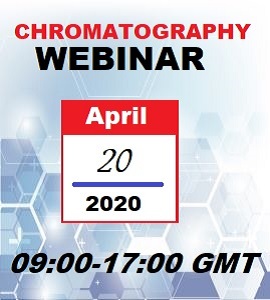Dr L.Hetemi
Institute of biochemistry Skopje, north macedonia.
Title: Diabet type ll related with anemia
Biography
Biography: Dr L.Hetemi
Abstract
Introduction: The purpose of this study was to: follow-up patients with type II diabetes through testing of: glycated hemoglobin (HbA1c) derivatives, but the importance of the HPLC method during HbA1c testing in: diagnosis, monitoring, follow-up, access to type II diabetes therapy also obtained results from: diabetes mellitus, diabetes, patient insulin insertion, monotherapy, but also findings of abnormal HgB forms in diabetic patients, such as hemoglobinopathies, and during the research we found that the diagnostic orientation through a HbA1c test with HPLC is in some pathology, which was both preventive and diagnostic in other pathologies.
The research lasted over 1 year at the Olive medical & laboratory diagnostic center. Keis group pharmaceutical Kosovo.For the first time in our country we performed HbA1c with HPLC. The G8 HPLC system based on the principle of high performance liquid chromatography (HPLC), the G8 analyser uses a cation exchange column to separate haemoglobin components by their ionic charges. The various components of haemoglobin, are quickly separated into 6 fractions and assayed during a 1.6 minute cycle. The absorbance of the different haemoglobin components, separated in the column, is monitored by the detector. When the assay is completed, results for these haemoglobin fractions are printed as percentages together with the chromatogram.
The study was conducted on 150 patients, of which 80% were type ll diabetes, age 40-65 years, with HbA1c ranging from 6.9-11%, HbA from 6-8, HbF of over 1 % -8% (in 48% of cases was HbF positive), the control group was non-diabetic, suspect, dyslipidemia patients with no signs of type II diabetes, the reason for testing being because they had high insulin resistance, or moderate , some were cases of polycystic ovary syndrome etc, their age ranged from 40-65 years. In addition to the absolute accuracy of the HPLC method in testing HbA1c, in this study we found HbF positive of patients with type II diabetes, which is leading us to anemia, and the cause of this anemia is thought to be impairment of renal function, such as diabetic nephropathy - complication of type II diabetes, but a still unclear mechanism between abnormal HbF congenital and type II diabetes will to remain uninvolved as we were not able to test all the patients for Hb electrophoresis.
From these laboratory findings, HbF results in increased pathology: in addition to being an innate congenital form, its elevated level was also found in cases of pernicious anemia, hemolytic, thalassemia, thyrotoxicosis, venous thrombosis. LA1c as the labile form of glycated Hb,could be increase in case of presence of carbamylated Hb (urea, patients with kidney diseases) and acetylated Hb (alcohol abuses, liver diseases, etc), of course increase of blood sugar glucose. When blood glucose levels are high,glucose molecules attached to RBC,the longer hyperglycemia occurs,more the glucose binds to Hb,and higher the glycated Hb. So from this study we found approximately 35% of cases with LA1c positive, where diabetic nephropathy had already begun, which was confirmed by positive microalbuminuria, and consultations with patients with nephrologist. Abnormal forms of HbF lead in our country, and in these 150 cases there were no other abnormal forms of HbF, we conclude with the facts that HPLC can freely be called the gold standard diagnostic method, as it has proven to be the best method. Risk for pre-diabetic, where 20% of our patients, with HbA1c values between 6-6.4%, about 10% of our patients where with HbA1c values more than:6.5%,tested for the first time, that consider diabetic, about 25% where with adecuate control:with 6.6-7% values, and inadecuate control according ADA(Ameriacn Diabetic association criteria’s) with 7-8% values of HbA1c,about 45% of them.

